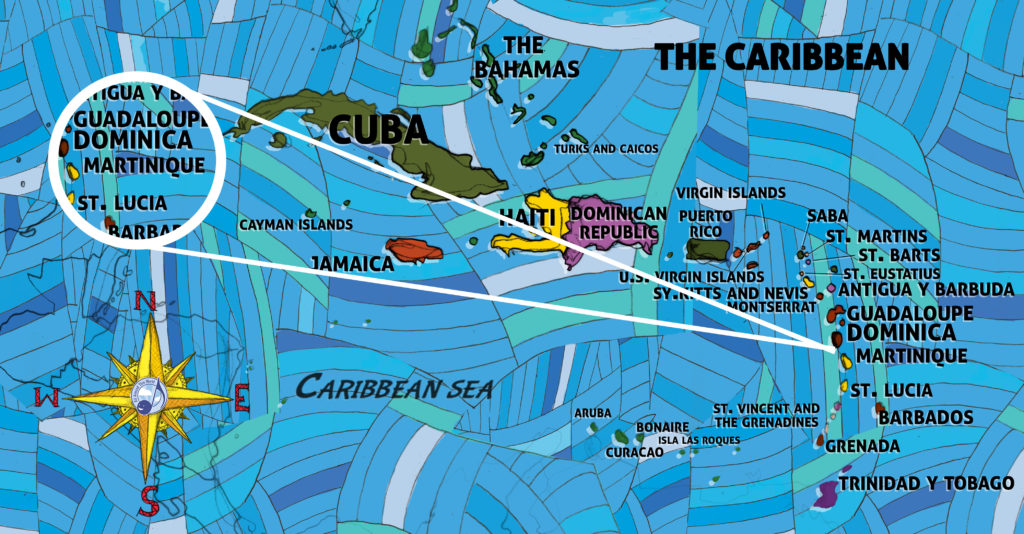The original version of “M’sieu Michel,” a Martinican song we sing this season in our online class, tells the true tale (as far as we’re told) of a labor dispute on the island between workers and their French boss. All the workers asked for was two francs in their paycheck rather than one — was that too much to ask, M’sieu Michel?! Apparently it was, because the workers became more and more insistent. When M’sieu Michel didn’t relent, they didn’t just ask for a raise — they demanded it. In real life did the workers receive an increased wage? We don’t know. In our version, OF COURSE.
Tag Archives | Martinique
In 1992 Kali was the Face of France
Kali is a vocalist and banjo player from Martinique who explores the roots of French West Indian music.
In paticular, Kali breathes new life into a genre of Martinican music called “biguine” while addressing political and social issues such as racism and economic inequality. In this video he represents all of France as he performs “Montè la Riviè,” in the 1992 version of the biggest reality singing competition in the world — Eurovision.
The Beauty of Bèlè
In class this week we try dancing to Martinican Bèlè, a form of West African-inspired music and dancing in Martinique that became an essential part of the working and family life of enslaved Africans on the island.
A traditional bèlè song starts with a call and response section led by a vocalist singing in Antillean Creole. (Watch this video of Martinican Bèlè in motion to get an idea.) After that comes a rhythmic section featuring the Ti-Bwa, two sticks that play on the back of a tambour, a goblet drum with a goatskin head, making music for an exuberant dance. In our classroom, the Twi-Bwa may be two pencils and our tambour may be a textbook, but our bèlè is beautiful.
Musical Martinique
This week in our online class for kids we travel to Martinique, which we’ll find in the “Lesser Antilles.” (Don’t let the islands hear you call them that. They may get a complex.) Martinique is an “insular region” of France, meaning it is officially one of the eighteen regions of France. Martinicans are French through and through..but Martinique is also Caribbean in all the usual, complicated ways — Carib ancestry, a history of being at the mercy of seafaring and plantation-owning British and the French, and an on-again, off-again relationship with slavery that puts African culture at its core.
You don’t want Kassav’ to be your doctor
Martinique’s most internationally famous band, Kassav’ formed in the late ’70s and early ’80s when musicians from Guadeloupe and Martinique got together in Paris to fuse Antillean kadans and biguine with electric guitars and funky horns. Kassav’ has since become the world’s premier zouk ensemble and has inspired subsequent generations of Caribbean zouk performers. In this video they triumphantly declare, “Zouk-la-sé-sèl-Médikaman Nou Mi” — “Zouk is our only medicine.”
A Swaré Bèlè
If, on your travels to Martinique you are lucky enough to be invited to a “Swaré Bèlè” (a Bèlè party)…ACCEPT THAT INVITATION!
Bèlè is an invigorating African-inspired dance found in Martinique. When you accept that invitation to a If, on your travels to Martinique you are lucky enough to be invited to a Bèlè party — a “Swaré Bèlè” — you will be able to see or join “la ronde Bèlè” (the Bèlè circle) that will have “La vwa” (the singer and the backup singers called “Le répondè”), lé tambouyé (2 drummers), “Le bwatè” (someone setting the rhythm, hitting the back of the drum with two sticks).


